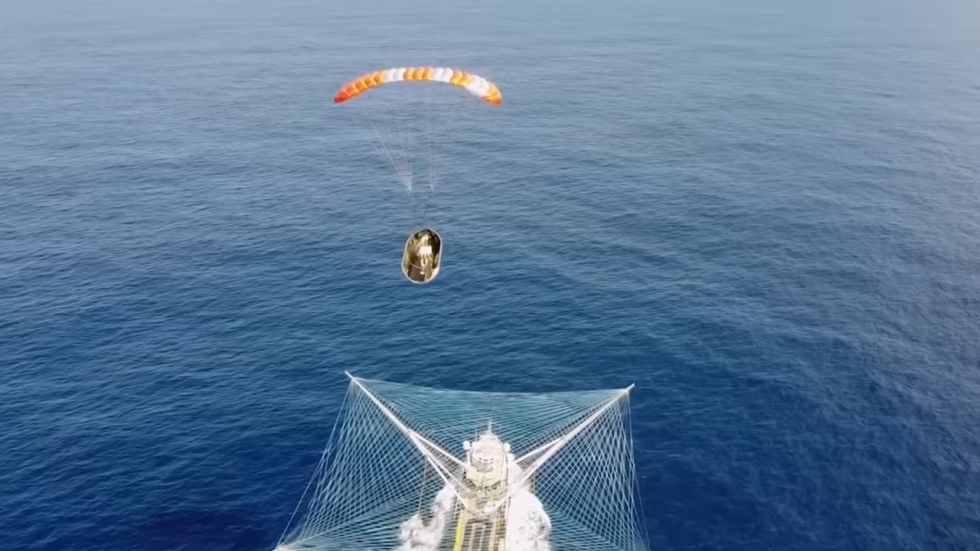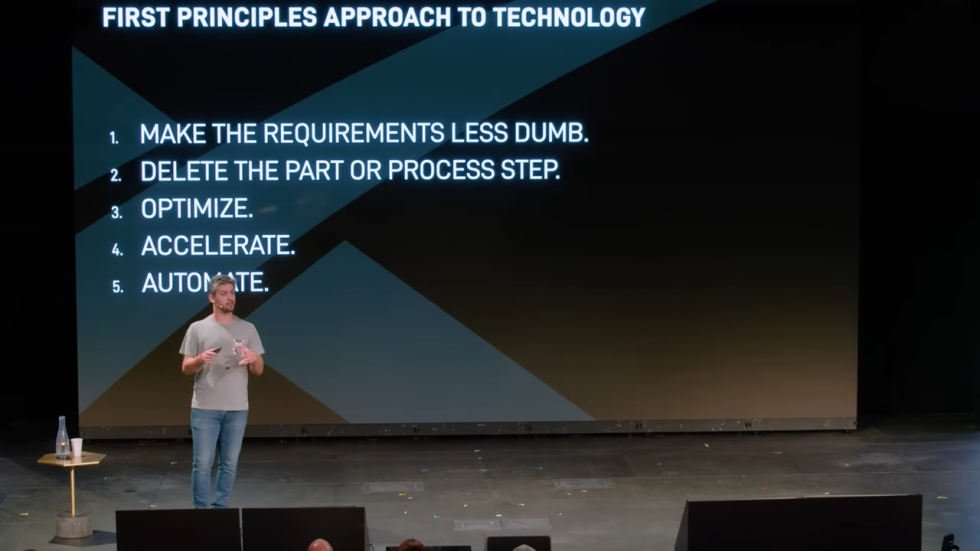Amid much fanfare, SpaceX started landing its Falcon 9 rockets in 2015, and it began reusing them less than two years later. The first stage of the Falcon 9 rocket, with nine engines and the bulk of the mass, accounts for about half of the cost of manufacturing a rocket, so this represents a considerable savings in time and money for SpaceX.
However, as with most other boosters, there are two other main components of the Falcon 9 rocket. There is the second stage, which boosts a payload into orbit, and, for most missions, a payload fairing that protects the satellite during its transit through the atmosphere. SpaceX briefly studied recovering the second stage of the Falcon 9 but concluded it was not feasible without major modifications that would have greatly reduced the rocket's payload capacity.
But what about the payload fairing? These are built in two pieces through a laborious process of laying down composite materials, not dissimilar to papier-mâché. The manufacture of fairings is time-consuming, and it costs about $6 million to produce both halves.
Go and get them
Several years ago, SpaceX founder Elon Musk challenged his employees to go catch the fairings. "You have six million bucks falling from the sky," Musk famously said. But how to do it?
Originally, the company's engineering team reasoned that they had to catch them with a net before hitting the ocean, said Kiko Dontchev, vice president of launch at SpaceX. Dontchev spoke about the fairing-recovery effort during the "Summit At Sea" program earlier this year. A video of his talk is available on YouTube.
The concern among the engineers was that exposing the fairing and its delicate electronics to seawater would cause significant corrosion. This would render the fairing halves unusable, they believed. So the SpaceX engineering team developed a complex recovery process, and the company caught its first fairing in January 2020.

"You basically had this really awesome algorithm, this crazy automation," Dontchev said. "The fairing had a parafoil and it would steer itself, and then the boat would have this automated control that would basically turn and follow. And the two would close. And that's how you would capture them. It worked. We did it."
Except it didn't work with regularity, as weather out in the Atlantic Ocean was a major factor.
"The reality is, most of the time, it's a choppy hot mess with 7- to 9-foot waves, a super short period, and a ton of wind," Dontchev said. "So even though we caught it once, our actual success rate for bringing fairings home was quite low. It was under 50 percent, 40 percent. Our ability to get fairings ready to fly was choking our launch rate."
Simplifying the process
As part of his talk, Dontchev spoke about the "algorithm" that SpaceX uses when it designs new technology to solve problems. Essentially, it provides a roadmap for innovating.
"When you're fundamentally innovating a new technology, you're wrong," he said. "It's just a question of how wrong. Because your ability to learn is changing constantly. So where you start is certainly not where you're going to end up."
The algorithm begins with two steps: "make the requirements less dumb" and "delete the part or process step." This basically means engineers should think outside of the box and challenge existing requirements. They should then ask whether they're solving the right problem.

In the case of the fairings, the problem of catching them before they fell into the ocean was the wrong problem. The right problem was recovering the fairings and refurbishing them for flight as quickly as possible.
"What we found out is that fairings float pretty well," Dontchev said. "Like a sailboat, they're composite. It's really just a big boat. Well, do we really need to catch them? We challenged that requirement. We moved some of the sensitive parts to the higher part of the fairing." This allows for the fairing electronics to survive, even if the fairing takes on a bit of water.
Putting it all together
The SpaceX algorithm has five steps. Basically, Dontchev said, you repeat the first two steps as many times as necessary before jumping to the final three steps: optimize, accelerate, and automate.
With the fairings, the company finally completed step two with the ocean-based recovery. It had a far simpler system, with a standard recovery vessel and crane to fish the fairing halves out of the ocean. This allowed the company to go from a low success rate of catching fairings to a 99 percent success rate of recovery. They could be rapidly refurbished and turned around for additional launches within weeks.
But this created a new problem of sorts. Where to put them all?
"We have more fairings than we have space," Dontchev said. "Fairings are a thing we don't even come close to talking about when it's time for launch. They're always ready, no problem."



3175x175(CURRENT).thumb.jpg.b05acc060982b36f5891ba728e6d953c.jpg)
Recommended Comments
There are no comments to display.
Join the conversation
You can post now and register later. If you have an account, sign in now to post with your account.
Note: Your post will require moderator approval before it will be visible.